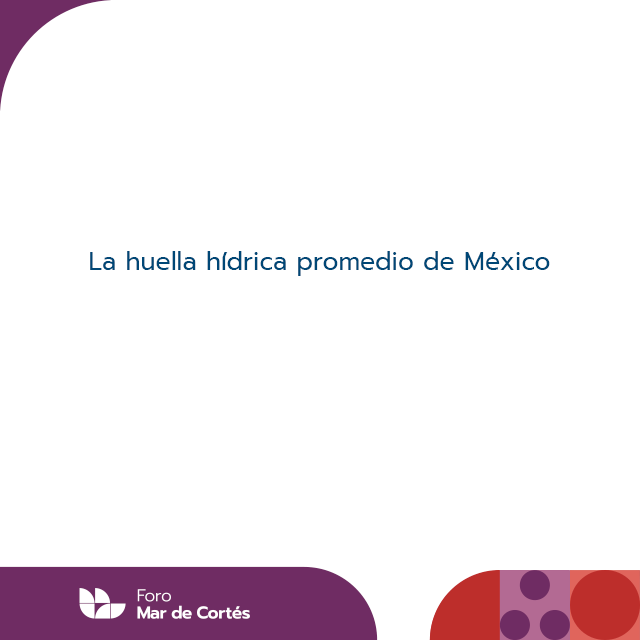In view of the increasingly recurrent droughts large swathes of the country, including the states of the northwestern Mexicorelatively little-known concepts such as the water footprint are beginning to take on greater relevance.
The Water Footprint Network defines the water footprint as an indicator that measures the amount of water used to produce the goods and services we use. It can be used to determine the total volume of water used in activities such as agriculture or in production processes such as those of industries, notes the blog Ecological Action.
He adds that the water footprint can be used to determine water consumption at the individual, local, national or business level.
"The use of this resource is measured in relation to the volume of freshwater consumed, evaporated or polluted. This can be measured over a period or in a specific geographic region."
Aquae Foundation points out that there are different types of water footprint, depending on the source of the input:
Blue water footprint
- The amount of water from surface or groundwater sources that is used for the production of a product or the provision of a service.
Green water footprint
- Rainwater is sometimes used in the manufacturing process of a product. It is calculated by looking at the volume of rainwater that is incorporated into the production process and does not become wastewater.
Gray water footprint
- This type of water footprint serves as an indicator of the level of freshwater pollution resulting from the entire production and marketing process of a product. The gray water footprint is the value resulting from calculating the amount of water needed to dilute the polluting substances until the water is clean enough to pass the quality controls required by law.
What is virtual water?
According to the National Water Commissionvirtual water represents the calculation of the total amount of water required to obtain a product, which includes the water used during cultivation, growth, processing, manufacturing, transportation and sale of the products. For each food and agricultural or industrial product, the virtual water content can be calculated and is said to be virtual because it is not present in the final products.
How is the water footprint measured?
The Conagua emphasizes that the water footprint is calculated as the domestic consumption of water resources, minus virtual water exports, plus virtual water imports.
For a product, it is the total content of blue, green and gray water involved in the entire process chain.
A person's water footprint is obtained by adding up the water footprint of all the products, goods and services he or she consumes and uses.
The water footprint The production capacity of a country is obtained by adding up the green, blue and gray water in all its agricultural production processes, as well as the blue and gray water from industrial and domestic processes.

Water footprint in the world
For developed countries, the level of consumption of goods and services is high, the water footprint per person is large due to higher purchasing power and high consumption of meat and industrialized products. In contrast, developing countries generally have low water footprints, although sometimes they have high water footprints per person, even if their consumption levels are lower, they do have low water use efficiency or unfavorable climatic conditions for cultivation.
Globally, the per capita water consumption footprint is estimated at 1,385 m³/year. The three North American countries are above this average: the United States ranks eighth, Canada 20th and Mexico 49th for this indicator. The consumption of agricultural products makes up the majority of our water footprint as individuals.
Mexico's average water footprint is 1,978 cubic meters per inhabitant.
The 86% of a Mexican's water footprint consists of food and beverage products, 6% other agricultural products (mainly hides and skins and cotton), 5% domestic consumption and 3% industrial products.
Eating habits, consumption patterns and lifestyle (transportation, technology, entertainment, occupation, hobbies) are the factors that determine the magnitude of our individual water footprint, that is, how much water is necessary for us to live the way we do. Invariably, the amount of water used in one process was at the expense of another possible use, or the water required by ecosystems.
Sources: Ecological Action, Aquae Foundation, Conagua


